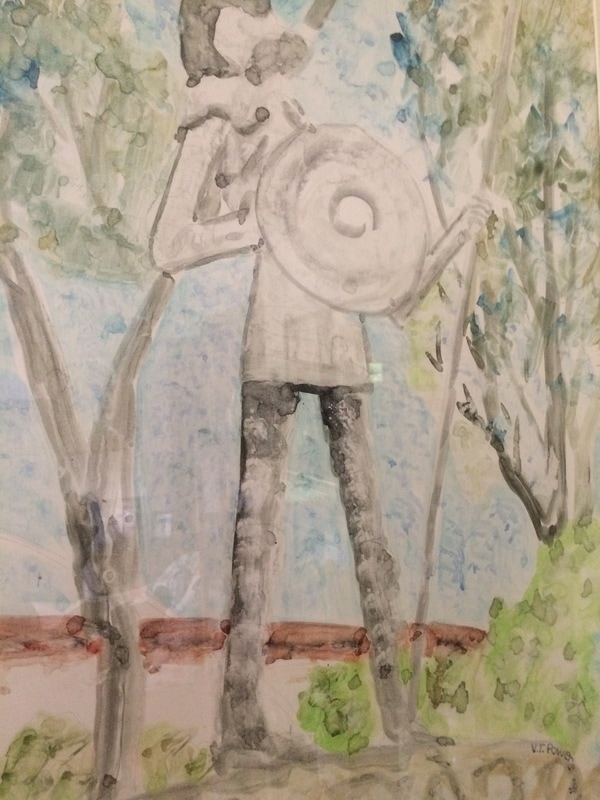A Stranger Tale
Blooms in magnolia trees make satin flowers
Amidst the twilight hue
And let me pin a flower over your gypsy life
In caravan on pony trap – see the journey’s
Plotted route to where you are going
Along an invisible road –
Oh! To hamlet, to town on thoroughfare
To cottages and willows
Grown aside a castle needing repair.
Oh – can you throw a posy to the wind?
Will you speak of trials –
Not knowing where to begin?
Oh look: there is a handsome stranger
With flashing nocturnal eyes,
In his cloak and sombrero –
Know you not him in disguise?
And with a jaunty tap,
He pulls up in his trap, lets pony breathe.
And now he plays the Master
With accomplished ease –
Come: will you kiss him,
Who may have all bliss –
That gypsy rover, from whom you steal
A kiss.
Now, with a part-smile of lowered eyes
You gaze at him,
As though he were your prize,
But hearken! In his whistle is heard
The singular word,
And to total freedom this man moves away.
He has all the world
But nowhere to stay
No! You cannot keep him
Who forever roams;
He is the gypsy traveler
Whom no-one may own.
But oh! His smile will a souvenir stay –
That was his goodbye,
He who would not stray,
Feeding you now the handshake of relief
Oh! Let him go, for he may only bring you grief.
Smile a hand-wave, a pucker from the lips
Beware this traveler,
Who speaks with a foreign lisp.
Goodbye! Oh – Farewell, Au Revoir –
It is now all over:
Joy mixed with sorrow, the final pause
Is to roam forever – this perfect traveler
Whose aim one can never tell.
Now, down the lane, the highway of hope,
Leaves the traveler
Who revives for a different scope:
See – he is now but a shadow
On the breeze: he has the magic
To do as he please
Wave, oh wave, and farewell bid –
Like a Spanish warrior – he is El Cid.

El Cid -- Victoria Powers
Blooms in magnolia trees make satin flowers
Amidst the twilight hue
And let me pin a flower over your gypsy life
In caravan on pony trap – see the journey’s
Plotted route to where you are going
Along an invisible road –
Oh! To hamlet, to town on thoroughfare
To cottages and willows
Grown aside a castle needing repair.
Oh – can you throw a posy to the wind?
Will you speak of trials –
Not knowing where to begin?
Oh look: there is a handsome stranger
With flashing nocturnal eyes,
In his cloak and sombrero –
Know you not him in disguise?
And with a jaunty tap,
He pulls up in his trap, lets pony breathe.
And now he plays the Master
With accomplished ease –
Come: will you kiss him,
Who may have all bliss –
That gypsy rover, from whom you steal
A kiss.
Now, with a part-smile of lowered eyes
You gaze at him,
As though he were your prize,
But hearken! In his whistle is heard
The singular word,
And to total freedom this man moves away.
He has all the world
But nowhere to stay
No! You cannot keep him
Who forever roams;
He is the gypsy traveler
Whom no-one may own.
But oh! His smile will a souvenir stay –
That was his goodbye,
He who would not stray,
Feeding you now the handshake of relief
Oh! Let him go, for he may only bring you grief.
Smile a hand-wave, a pucker from the lips
Beware this traveler,
Who speaks with a foreign lisp.
Goodbye! Oh – Farewell, Au Revoir –
It is now all over:
Joy mixed with sorrow, the final pause
Is to roam forever – this perfect traveler
Whose aim one can never tell.
Now, down the lane, the highway of hope,
Leaves the traveler
Who revives for a different scope:
See – he is now but a shadow
On the breeze: he has the magic
To do as he please
Wave, oh wave, and farewell bid –
Like a Spanish warrior – he is El Cid.

El Cid -- Victoria Powers
Rodrigo Díaz de Vivar was a Castilian military leader who became regarded as Spain's national hero after his death. He 1st rose to prominence in king Sancho II's wars of unification against his brothers Alfonso VI of León and García II of Galicia and in his conquest of Muslim territories in al-Andalus. After Sancho was deposed by Alfonso and his sister Urraca, Alfonso succeeded to the throne and exiled Rodrigo. Already known as "El Campeador" (the Champion), Rodrigo the served under the Muslim rulers of Zaragoza, defending their lands against Aragon and Barcelona. After Alfonso's 1086 defeat by the Berbers known as the Almovravids he recalled Rodrigo to his service. (The Al-Murabitun had founded Marrakesh in 1062 and formed an empire in North Africa and Spain.) Rodrigo used the opportunity to establish control over the Muslim city-state of Valencia and later established independent rule over it. He died during an Almoravid siege, but his widow dressed his corpse in armor and mounted him over his horse Babieca to bolster his troops' morale in a successful charge against the Muslims; nevertheless, the city fell and was not retaken by Christians for another century and a quarter.
ReplyDeleteHe was not known as "El Cid" (from the Old Spanish "Çid," derived from the dialectal Arabic word sîdi or sayyid, meaning “Lord” or “Master”). It was not until a century after his death that he was called "mio Cid el Campeador."